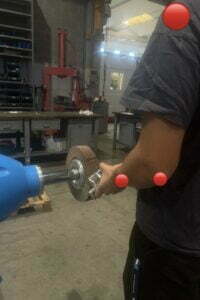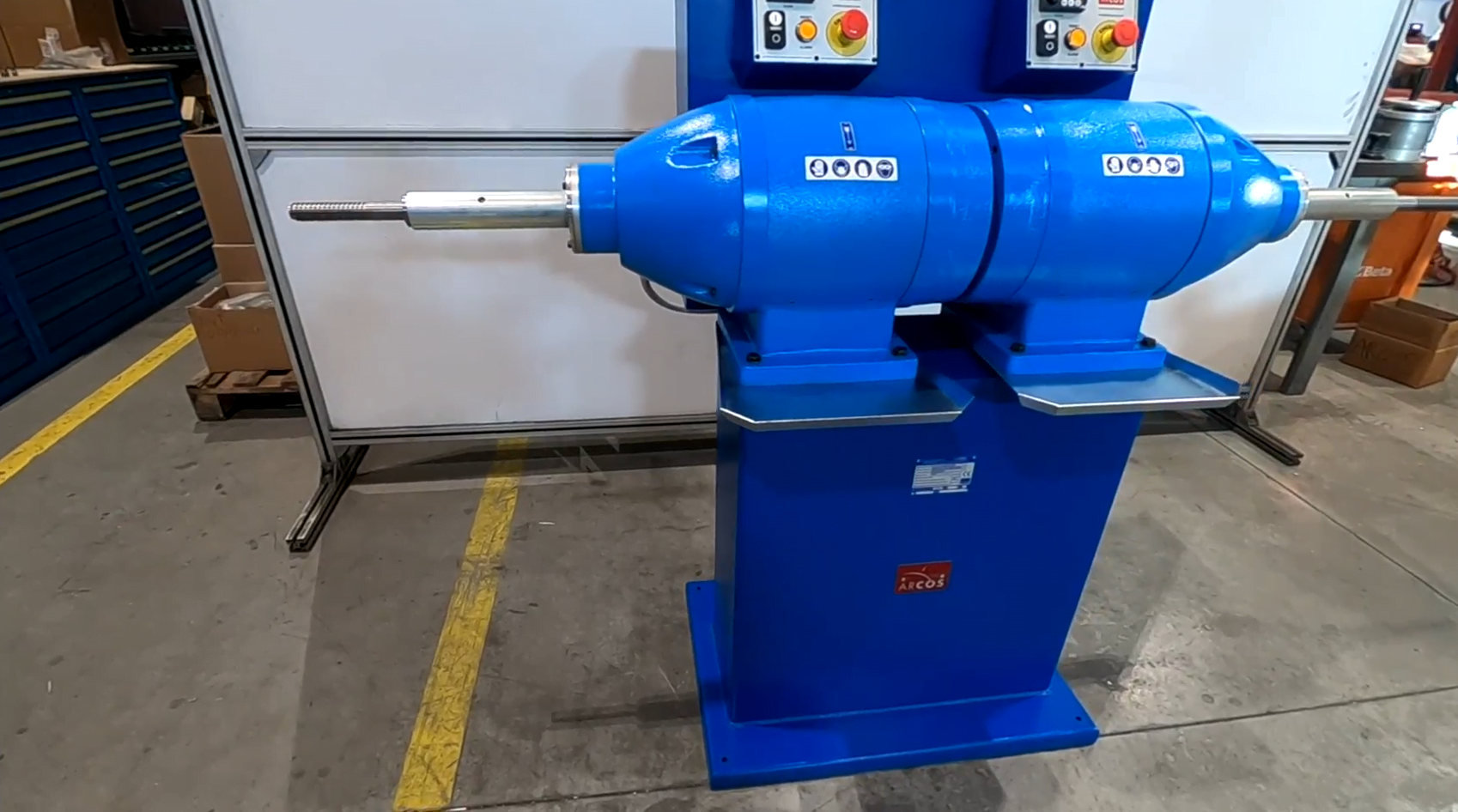The surface finishing works today reach very high quality levels thanks to the technologies introduced in the company. Manual machines remain a widely used instrumentation within numerous and diversified production realities: their use in support of the operator allows to finish particular geometries and to guarantee an extremely personalized level of finish.
A key feature to consider is the impact of vibrations from manual machines on the health of the operator. To guarantee safe workplaces and processes that safeguard the well-being of human resources, Arcos has developed a technology capable of limiting vibrations as much as possible.
What are the rules to be respected in this area, what are the effects on the operator and the prevention actions implemented by Arcos? Read the in-depth study to find out all the answers on the subject.
Table of Contents
What the law states on the topic of vibration
The maximum value of the vibrations emitted by the machinery is defined at a regulatory level to ensure safety in the workplace. Attention to vibrations arises regardless of the sector of reference: each production area where manual machines are used (and more generally machines that release vibrations) must comply with existing legislation.
The legislation that regulates the risk of vibrations is dealt with in Title VIII to Chapter III of the consolidated text on safety at work. Specifically, reference is made to the UNI 5349 series of standards for vibrations in the upper limbs and to UNI 2631 for vibrations transmitted to the whole body.
The vibrations that release the manual machines mainly affect the operator’s arm. It has been established that the limit value of vibrations transmitted to the daily hand-arm system – referring to 8 hours – is 5 m/s²; over periods shorter than 20 m/s². Arcos technology, as we will see shortly, is able to work well below this regulatory limit.
Why it is important to limit vibrations

The main risk is that in the long run the vibrations can lead to a series of prolonged pathologies up to invalidating the operation of the person himself. Some machines, if not properly ballasted and balanced, amplify this phenomenon. Pathologies that can arise from hand-arm vibrations mainly manifest themselves as vascular, osteoarticular, neurological or muscular disorders.
Therefore, limiting the vibrations of manual machines as much as possible means safeguarding the health of the operators and extending their skills over time.
How to limit the vibrations of manual machines?
The manufacturer of the grinding and polishing machines must have important precautions to minimize the vibrations transmitted to the operator. Which?
Arcos, extremely attentive to the health of operators, has introduced a series of precautions to minimize the vibrations transmitted from the machine to the operator.
The work carried out on Arcos manual machines included:
- motor casings in cast iron and not in aluminum or electro-welded material,
- double angular contact bearing on both sides of the shaft,
- shaft with dimensions of 55mm,
- balancing of all rotating parts with a new generation CEMB balancing machine – Type: balancing machine, Model: ZB50 / TC / GV,
- ballast in the base of the machine system.
Following all these measures, various tests were carried out to detect the vibration level of the manual machine. During the grinding of the pieces, the vibration transmitted to the three fundamental points, wrist, elbow and shoulder, was found to be less than 1.5 m/s².
The result is extremely optimal given the limit values set by the legislation and allows operators to finish the surface of the materials in complete safety.
Conclusions
In surface finishing, manual machine technologies are highly used: it is essential to assess the vibration value of the manual machine, which is extremely risky for the operator’s well-being. To ensure efficiency and safety, Arcos has introduced various measures in the construction of this specific technology. In this way, Arcos manual machines do not transmit vibrations that put the health of the operators at risk, offering companies cutting-edge tools they can rely on.
Would you like to deepen this issue? Contact us: an Arcos technician will be at your disposal to answer any questions.


